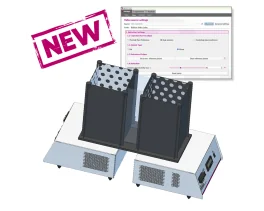Authors
S. Tamareille, N. Ghaboura, F. Treguer, D. Khachman, A. Croué et al.
Lab
Unité Propre de Recherche de l'Enseignement Supérieur Equipe d'Accueil 3860, Protection et Remodelage du Myocarde, Faculté de Médecine d'Angers, Université d'Angers, et Service de Cardiologie, Centre Hospitalier Universitaire d'Angers, Angers, France.
Journal
American Journal of Heart and Circulatory Physiology
Abstract
Ischemic postconditioning (IPost) and erythropoietin (EPO) have been shown to attenuate myocardial reperfusion injury using similar signaling pathways. The aim of this study was to examine whether EPO is as effective as IPost in decreasing postischemic myocardial injury in both Langendorff-isolated-heart and in vivo ischemia-reperfusion rat models. Rat hearts were subjected to 25 min ischemia, followed by 30 min or 2 h of reperfusion in the isolated-heart study. Rats underwent 45 min ischemia, followed by 24 h of reperfusion in the in vivo study. In both studies, the control group (n = 12; ischemia-reperfusion only) was compared with IPost (n = 16; 3 cycles of 10 s reperfusion/10 s ischemia) and EPO (n = 12; 1,000 IU/kg) at the onset of reperfusion. The following resulted. First, in the isolated hearts, IPost or EPO significantly improved postischemic recovery of left ventricular developed pressure. EPO induced better left ventricular developed pressure than IPost at 30 min of reperfusion (73.18 ± 10.23 vs. 48.11 ± 7.92 mmHg, P < 0.05). After 2 h of reperfusion, the infarct size was significantly lower in EPO-treated hearts compared with IPost and control hearts (14.36 ± 0.60%, 19.11 ± 0.84%, and 36.21 ± 4.20% of the left ventricle, respectively; P < 0.05). GSK-3_ phosphorylation, at 30 min of reperfusion, was significantly higher with EPO compared with IPost hearts. Phosphatidylinositol 3-kinase and ERK1/2 inhibitors abolished both EPO- and IPost-mediated cardioprotection. Second, in vivo, IPost and EPO induced an infarct size reduction compared with control (40.5 ± 3.6% and 28.9 ± 3.1%, respectively, vs. 53.7 ± 4.3% of the area at risk; P < 0.05). Again, EPO decreased significantly more infarct size and transmurality than IPost (P < 0.05). In conclusion, with the use of our protocols, EPO showed better protective effects than IPost against reperfusion injury through higher phosphorylation of GSK-3_.
Source :

 Pain - Thermal Allodynia / Hyperalgesia
Pain - Thermal Allodynia / Hyperalgesia Pain - Spontaneous Pain - Postural Deficit
Pain - Spontaneous Pain - Postural Deficit Pain - Mechanical Allodynia / Hyperalgesia
Pain - Mechanical Allodynia / Hyperalgesia Learning/Memory - Attention - Addiction
Learning/Memory - Attention - Addiction Physiology & Respiratory Research
Physiology & Respiratory Research











![Dynamic Weight Bearing 2.0 – Postural Module [Add-on]](https://bioseb.com/733-home_default/dynamic-weight-bearing-20-add-on-postural-module.jpg)
























 Pain
Pain Central Nervous System (CNS)
Central Nervous System (CNS) Neurodegeneration
Neurodegeneration Sensory system
Sensory system Motor control
Motor control Mood Disorders
Mood Disorders Other disorders
Other disorders Muscular system
Muscular system Joints
Joints Metabolism
Metabolism Cross-disciplinary subjects
Cross-disciplinary subjects CONFERENCES & MEETINGS
CONFERENCES & MEETINGS